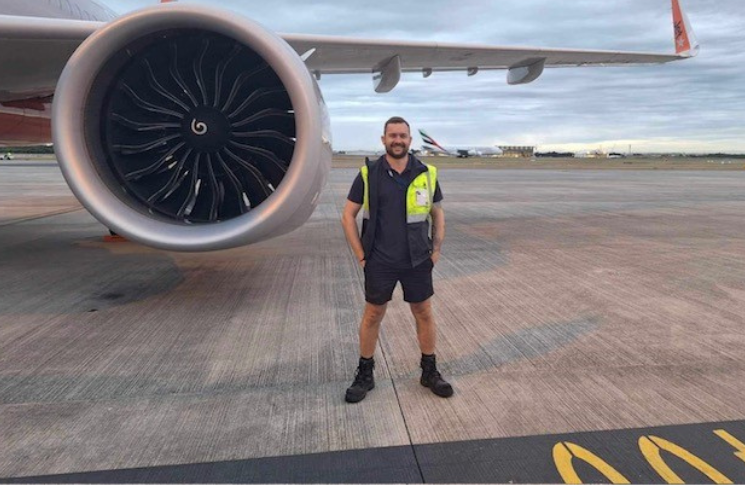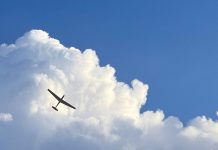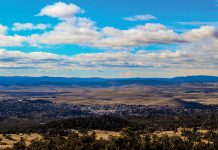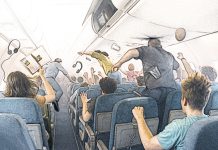2024 AME scholarship winner Kurt Kinlyside’s journey into aviation maintenance
Disarming mines and bombs in the army isn’t your typical pathway into a career in aviation – but for aircraft maintenance engineer (AME) Kurt Kinlyside, it was all part of the journey.
A former combat engineer in the Australian Defence Force, Kurt’s early working life was worlds away from the hangars and tarmacs he now calls home.
‘Yeah, it’s a lot different to what I’m doing now,’ he says with a laugh. ‘Back then, I was working with explosives. Now, I’m making sure commercial aircraft are safe to fly.’
It’s been a significant transition, but one that’s made perfect sense for Kurt – a hands-on person who’s always loved fixing things and figuring out how they work.
‘Even on my days off, I’m always in the shed working on cars or fixing things. So to come to work and get paid to do something I’d happily do for free – that’s pretty ideal.’
Kurt, one of our 2024 AME scholarship winners, grew up in Nowra, a navy town on the south coast of New South Wales, where military aircraft were a regular part of the skyline.
But it wasn’t just defence aviation that caught his eye – the whole idea of flight fascinated him.
‘I’ve always flown around in planes and I guess I just decided at some point that this is what I wanted to do,’ he says. ‘I completed a Certificate II in Aircraft Line Maintenance while I was in high school, but at the time I felt too young to get into it properly. I thought I’d come back to it later.’
Finding direction after Defence
Instead, he signed up for the army, spending 4 years as a combat engineer. When the time came to leave the military, there was no hesitation about what came next.
‘When I got the call about the aviation job, it was only a couple of weeks before I left Defence, so the timing worked out perfectly,’ he says. ‘I knew that was the direction I wanted to take.’
He landed his first AME job with Jetstar in early 2020 – just in time for the pandemic to shake up the aviation industry.
‘We did 3 months on the floor, and then COVID hit,’ he recalls. ‘We were given the option to either take redundancy or move to Melbourne to continue the apprenticeship.’
Kurt made the move, and says it was one of the best decisions of his career.
‘There were 10 apprentices and only about 5 of us moved. At that stage, nothing was really established – it was a new facility and a bit up in the air – but I was lucky to be part of setting up the heavy maintenance operation there.’
Over the next few years, Kurt gained deep experience across both heavy and intermediate maintenance, while also studying for his mechanical exams with a goal of becoming a B1 licence holder.
Eventually, he moved again – this time to Brisbane – to take up a line maintenance role with 6 months left in his apprenticeship. It was another pivotal step.
‘That opportunity really helped fast-track my progression,’ he says. ‘They let me finish up the apprenticeship while already working in line, and I got signed off not long after.’
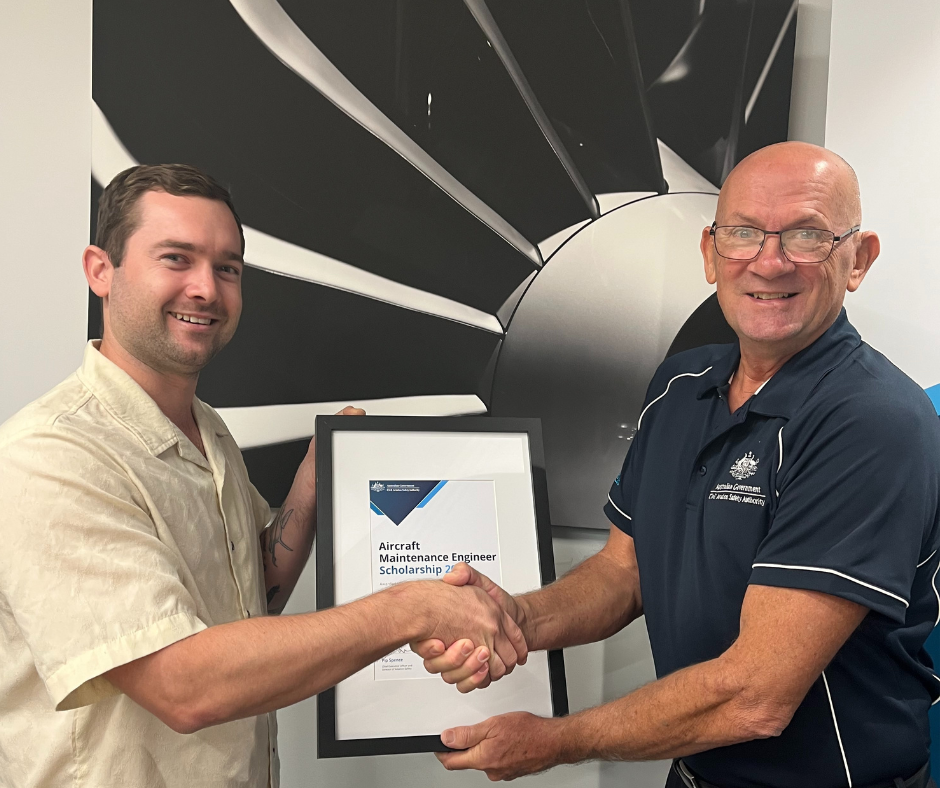
On the tools – and looking ahead
Today, Kurt is working with Alliance Airlines in Townsville as a licensed aircraft maintenance engineer (LAME). He has completed his type training on the Embraer jet and is now gaining the practical experience required to have the type rating issued on his licence.
His typical day now starts well before sunrise and can stretch to 11 hours, covering everything from pre-flight checks and defect rectification to troubleshooting and dispatch.
‘Every day is different,’ he says. ‘Every aircraft that comes in to us in maintenance has a different issue. It keeps things interesting – good or bad,’ he laughs.
The work is demanding, especially on night shifts. ‘You hit that 2 am mark and the body starts to slow down,’ he explains.
‘You’ve really got to get your sleep patterns right or it ruins you. We do a human factors refresher course every year, and fatigue management is a big part of that.’
But for Kurt, the challenges are balanced by the reward of keeping aircraft safely in the sky.
‘There’s nothing better than fixing a problem before it causes a delay, especially when you know there are people sitting at the gate staring out the window wondering what’s going on,’ he adds. ‘To be able to find the issue, fix it and send the aircraft off safely – that’s rewarding.’
Teamwork, he says, is essential.
‘If you can’t work in a team, things won’t get fixed safely – it’s that simple,’ he says, emphatically.
‘You need good time management and attention to detail. But you also need to be the kind of person who wants to get better, who wants to learn.’
That mindset is common in the industry, Kurt says, and one of the things that’s kept him motivated.
‘It’s probably the only job I’ve been in where you meet people who’ve been around 35 years or more – and it’s not just one or two. It’s most of them. People stay.’
Advice for the next generation
Kurt says the AME scholarship is a welcome boost to support his study and exam costs.
‘It was the best call I could’ve had, to be honest,” he says. ‘I’d just started night shift, and it was such a relief to know that I wouldn’t be getting into debt just to finish my licence. It’s been a massive help.’
For anyone considering applying for the scholarship, Kurt’s advice is simple: just go for it.
‘Don’t think your story’s not interesting enough, or that you won’t get it,’ he says. ‘If you’re studying toward a licence and you’re feeling the financial pressure, it’s worth applying. Be honest, tell them your story. You’ve got nothing to lose.’
He’s also keen to encourage young people thinking about a career in aviation maintenance, especially those from regional or defence communities.
‘I used to think I was too young to get started. But you’re never too young, and you’re never too old either. The Cert II is a great step forward, just get your foot in the door.’
With electric aircraft and new technologies on the horizon, Kurt sees a long future ahead in the industry.
‘There’s just going to be more work and more demand for skilled people,’ he says. ‘It’s definitely a growing industry – and I’m glad I jumped in when I did.’

